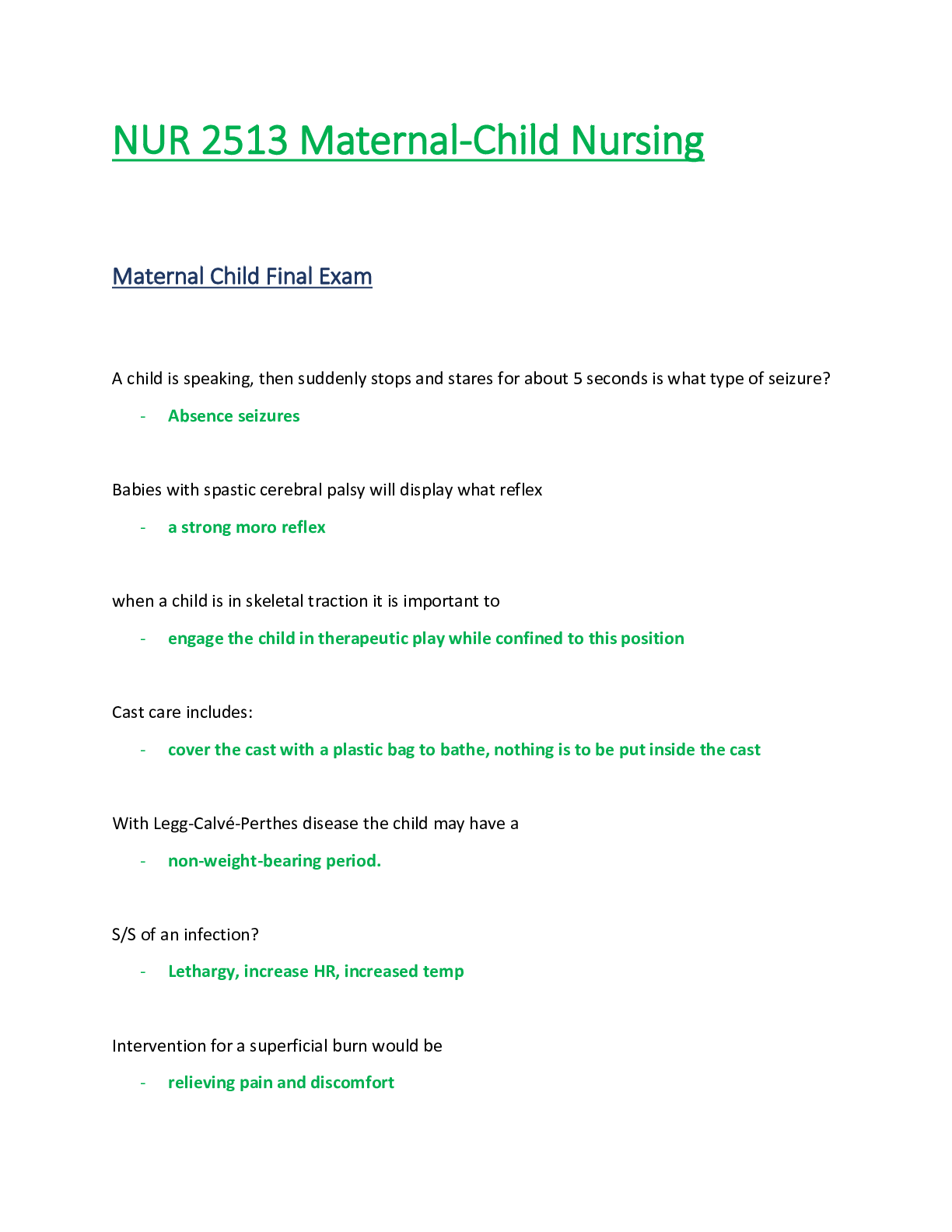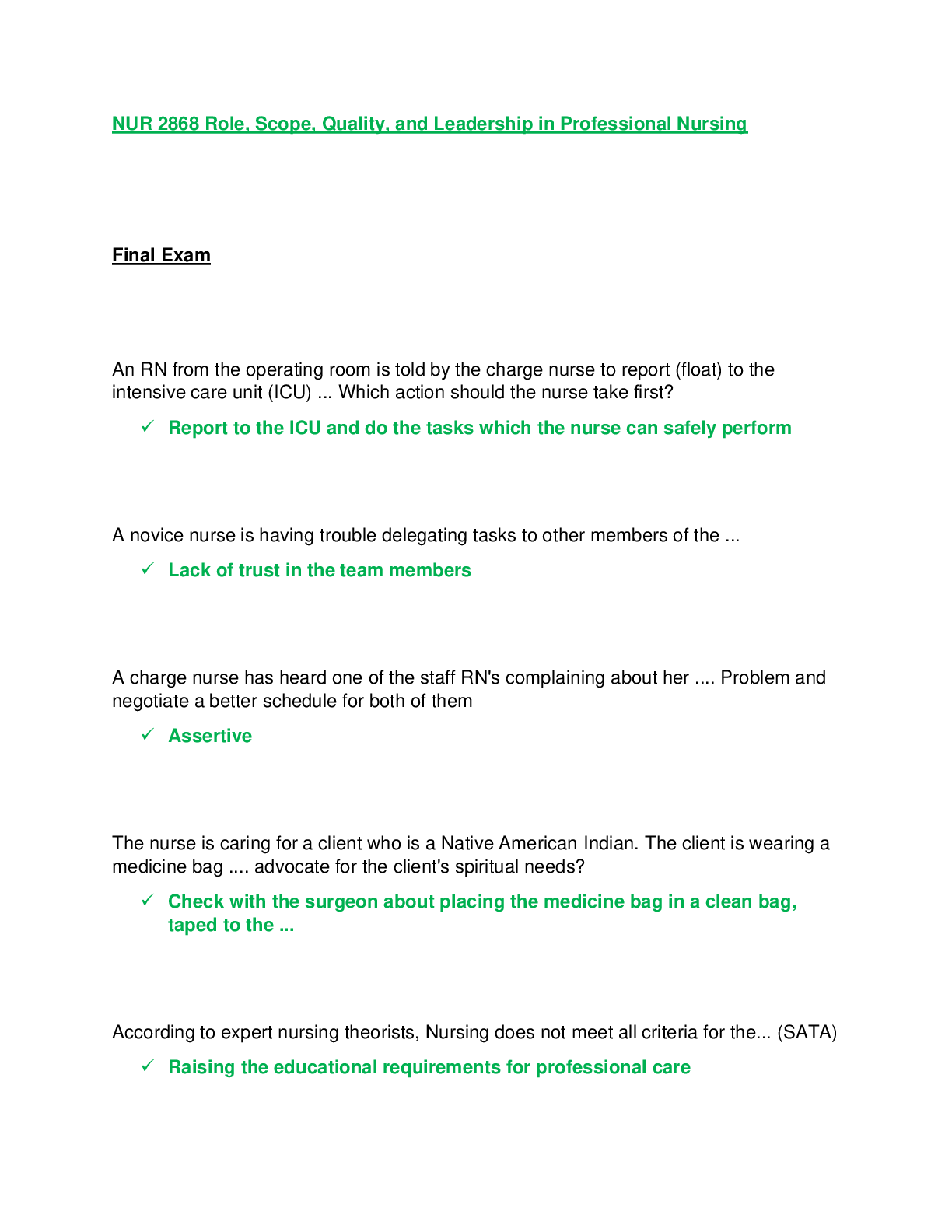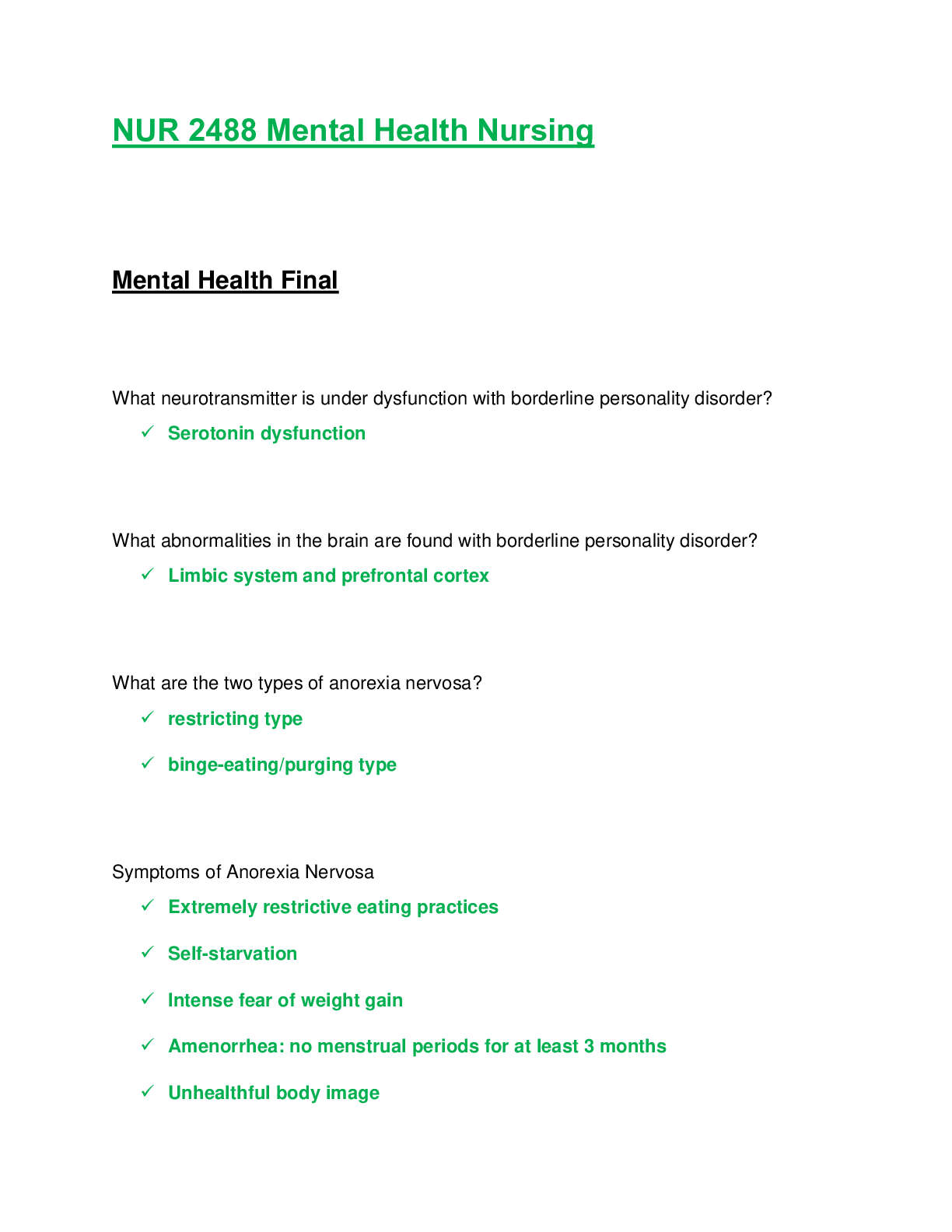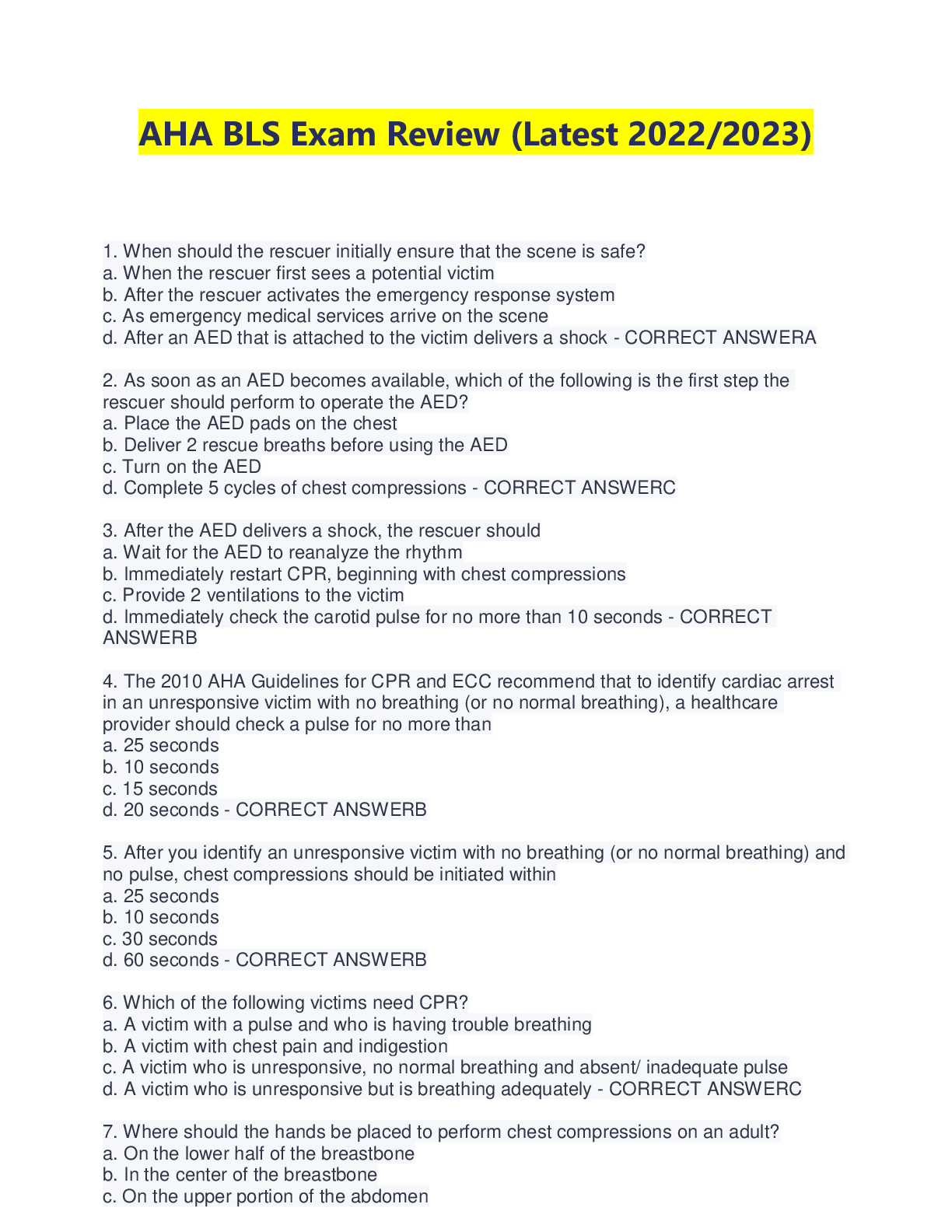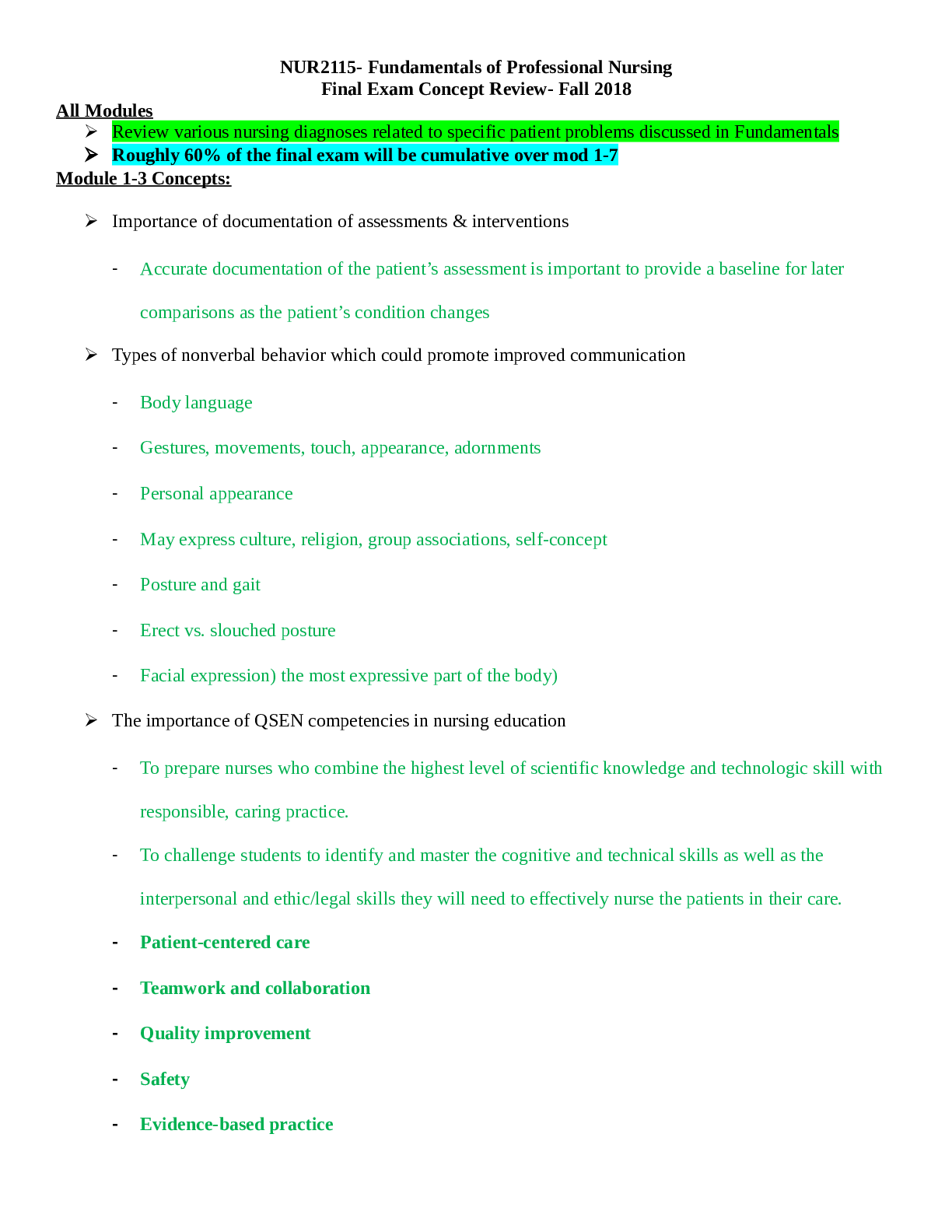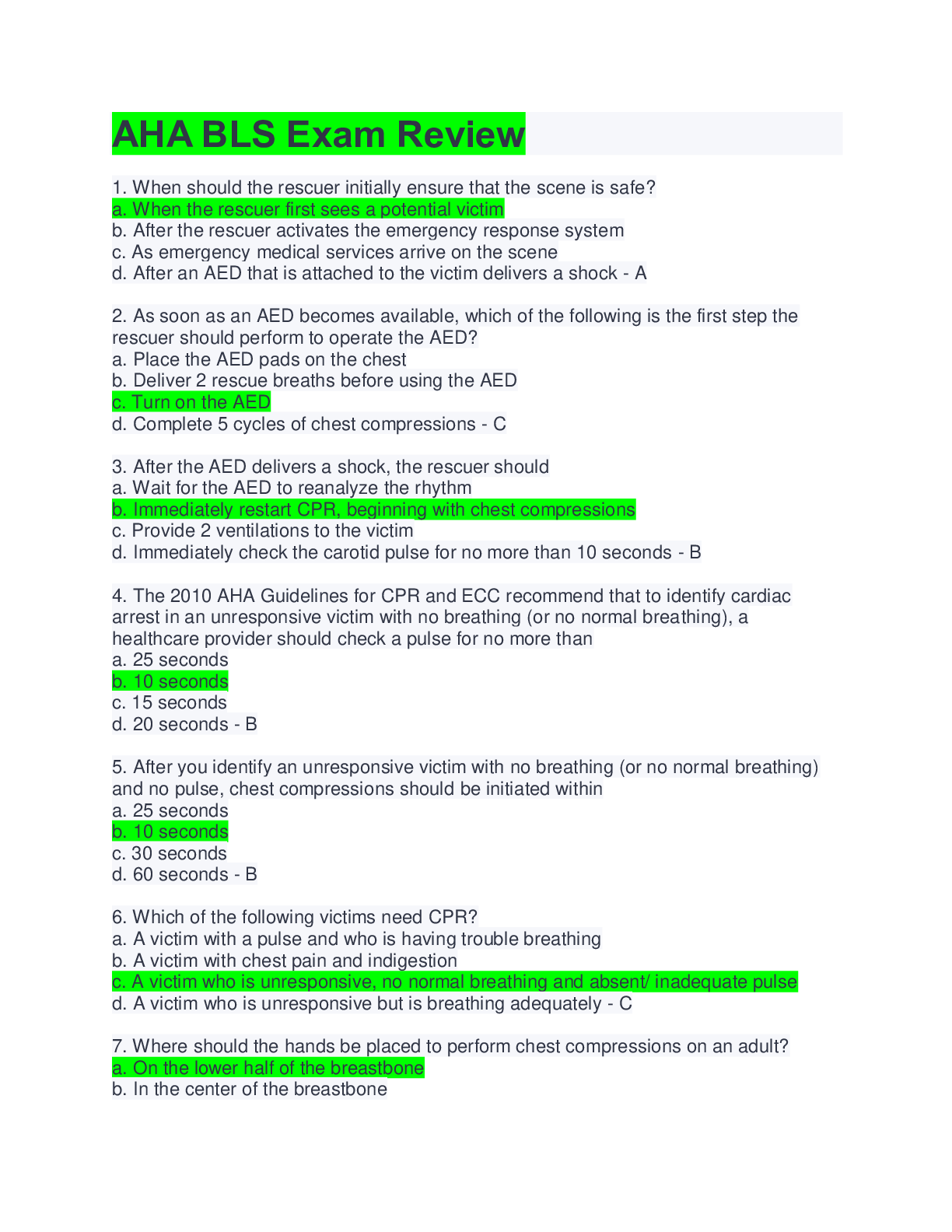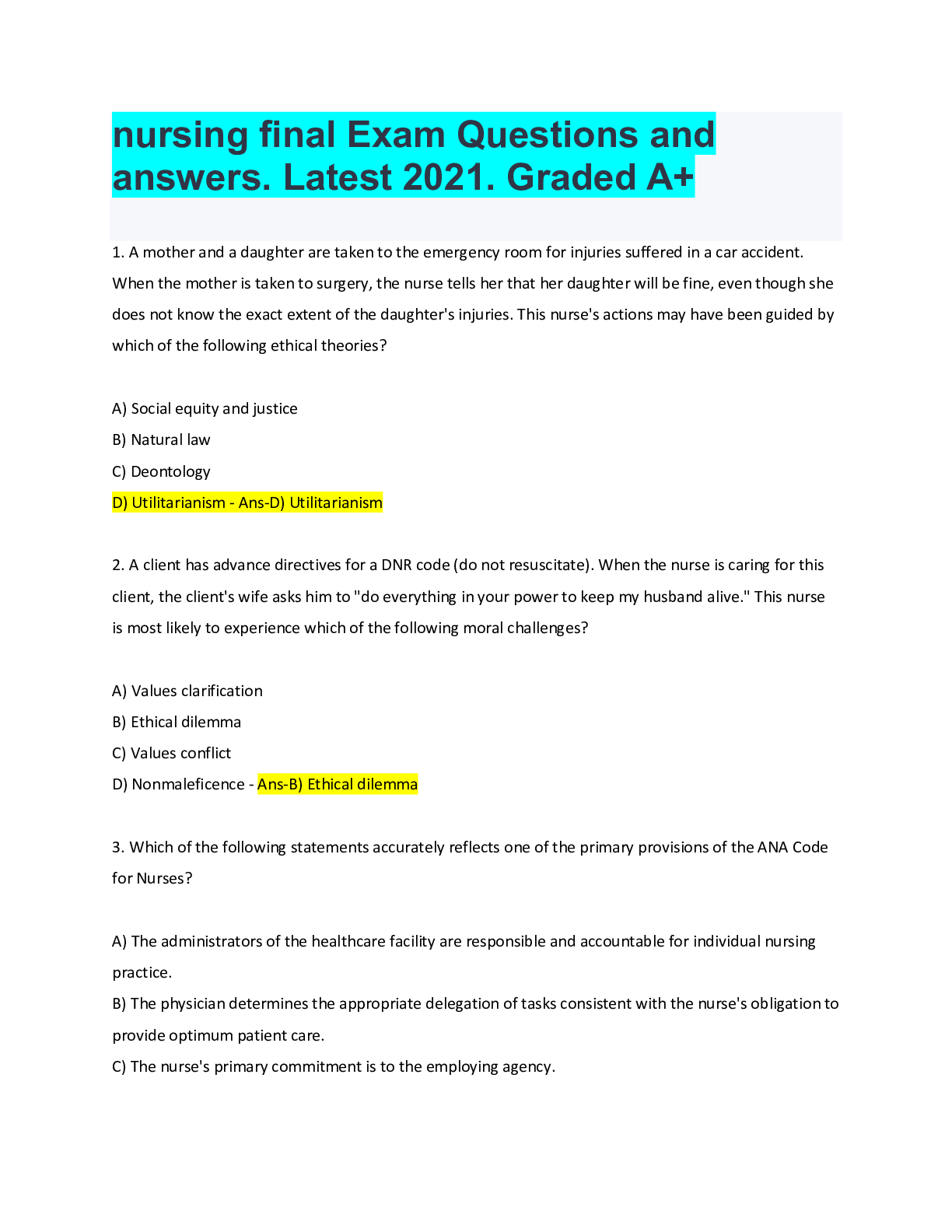Health Care > EXAM > NUR 2513 / NUR2513 Final Exam: Maternal Child Nursing Final Exam Review (Latest 2022/2023) Rasmussen (All)
NUR 2513 / NUR2513 Final Exam: Maternal Child Nursing Final Exam Review (Latest 2022/2023) Rasmussen
Document Content and Description Below
NUR 2513 / NUR2513 Final Exam: Maternal Child Nursing Final Exam Review (Latest 2022/2023) Rasmussen 1. Expected findings for bacterial pneumonia a. Ronchi (crackles), SOB, fever 2. What reflec... ts safe practice in administration of blood products a. Remain with the patient for the first 15 minutes of the infusion (2 nurse sign off) 3. Kawasaki Disease a. S/S: strawberry tongue, edema of hands and feet, conjunctivitis without exudate 4. Bronchiolitis home treatment a. Humidifier 5. Pharyngitis causes increased risk for developing a. Rheumatic fever 6. Post tonsillectomy, clear fluids are best a. Avoid carbonated beverages, acidic or red dyes 7. Signs and Symptoms of pneumonia a. SOB, crackles, using accessory muscles, diminished sounds 8. Epiglottitis position a. Upright 9. A new heart noninvasive diagnostic testing: a. First echocardiogram 10. Legg-Calve-Perthes disease a child may have: a. A non-weight bearing period 11. Symptoms associated with patent ductus arteriosus a. Machine like murmur head at the left sub clavicular margin 12. Contraction of aorta a. Be sure to assess femoral and radial pulses simultaneously 13. What to do when a tetralogy of Fallot patient becomes cyanotic and dyspneic a. Place in knee chest position 14. Initial nursing interventions for sickle cell anemia a. Hydration and pain management 15. What to do for severe dehydration a. IV fluids 16. Mild to moderate a. try oral hydration first 17. Adolescents are at greater risk for developing a STI because they are: a. Engaging in risky behaviors 18. A nurse would do what with a voiding cystourethrogram a. Insert foley catheter for instillation of contrast 19. Kidney transplant post op care would include: a. Reduce socialization, infection control precautions 20. Treatment for croup: a. Corticosteroids 21. S/S of dehydration in an infant a. Elevated HR, sunken fontanels 22. Acute glomerulonephritis is most frequently caused by: a. Group a beta-hemolytic streptococcus 23. How do you treat growth hormone deficiency? a. Growth hormone replacement 24. Most important for a newborn with a salt-losing form of congenital adrenal hyperplasia a. Dehydration 25. What causes Cushing syndrome and what does it look like a. Long term therapy with oral prednisone b. Will have purple striae on the abdomen form rapid weight gain 26. Type 2 diabetes mellitus disorder is associated with metabolic disturbances that results in: a. Insulin resistance 27. S/S of intracranial pressure a. Decreased LOC and decreased RR 28. Symptoms of hypocalcemia a. Jitteriness 29. Draw up short acting insulin [Show More]
Last updated: 11 months ago
Preview 1 out of 8 pages
Instant download
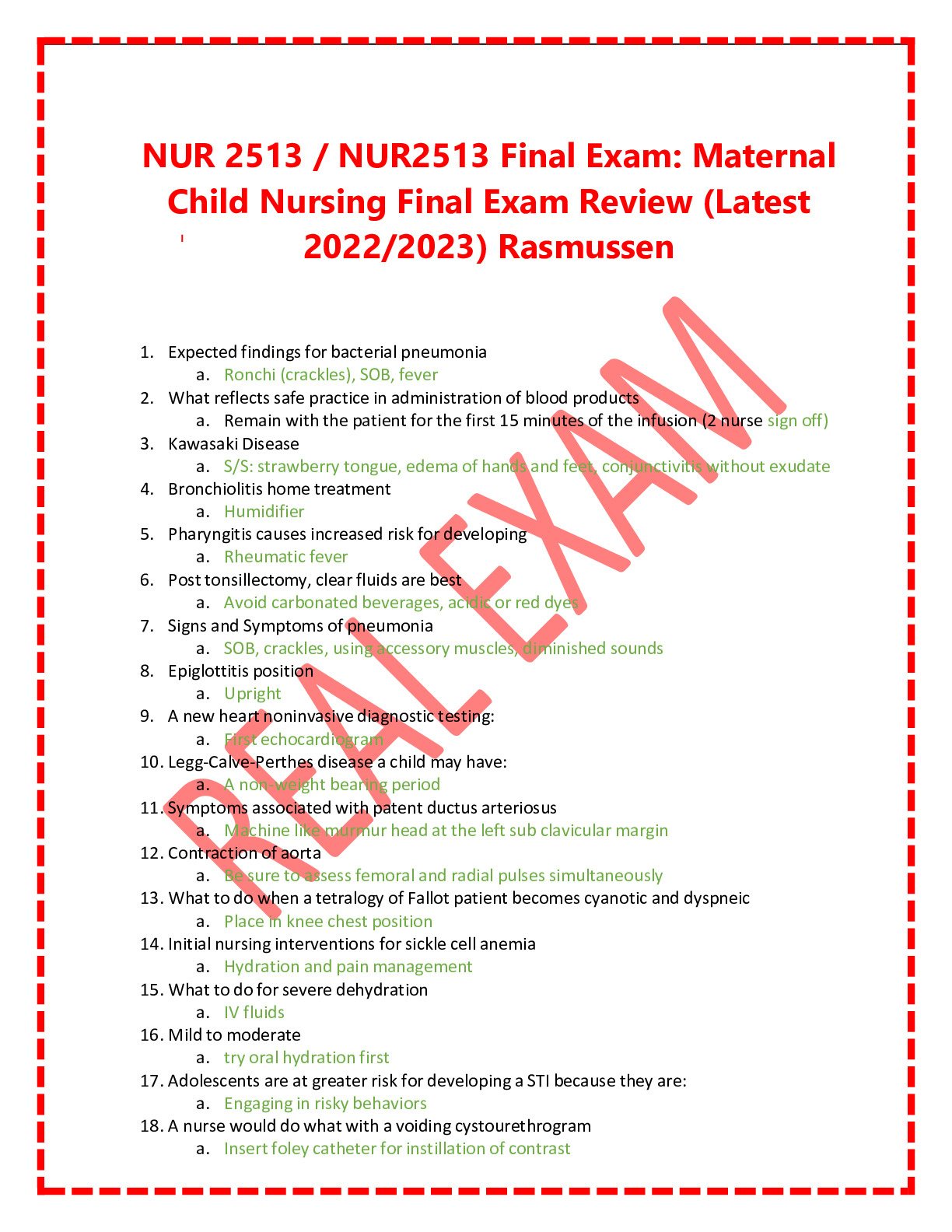
Instant download
Reviews( 0 )
Document information
Connected school, study & course
About the document
Uploaded On
Jun 14, 2023
Number of pages
8
Written in
Additional information
This document has been written for:
Uploaded
Jun 14, 2023
Downloads
0
Views
43


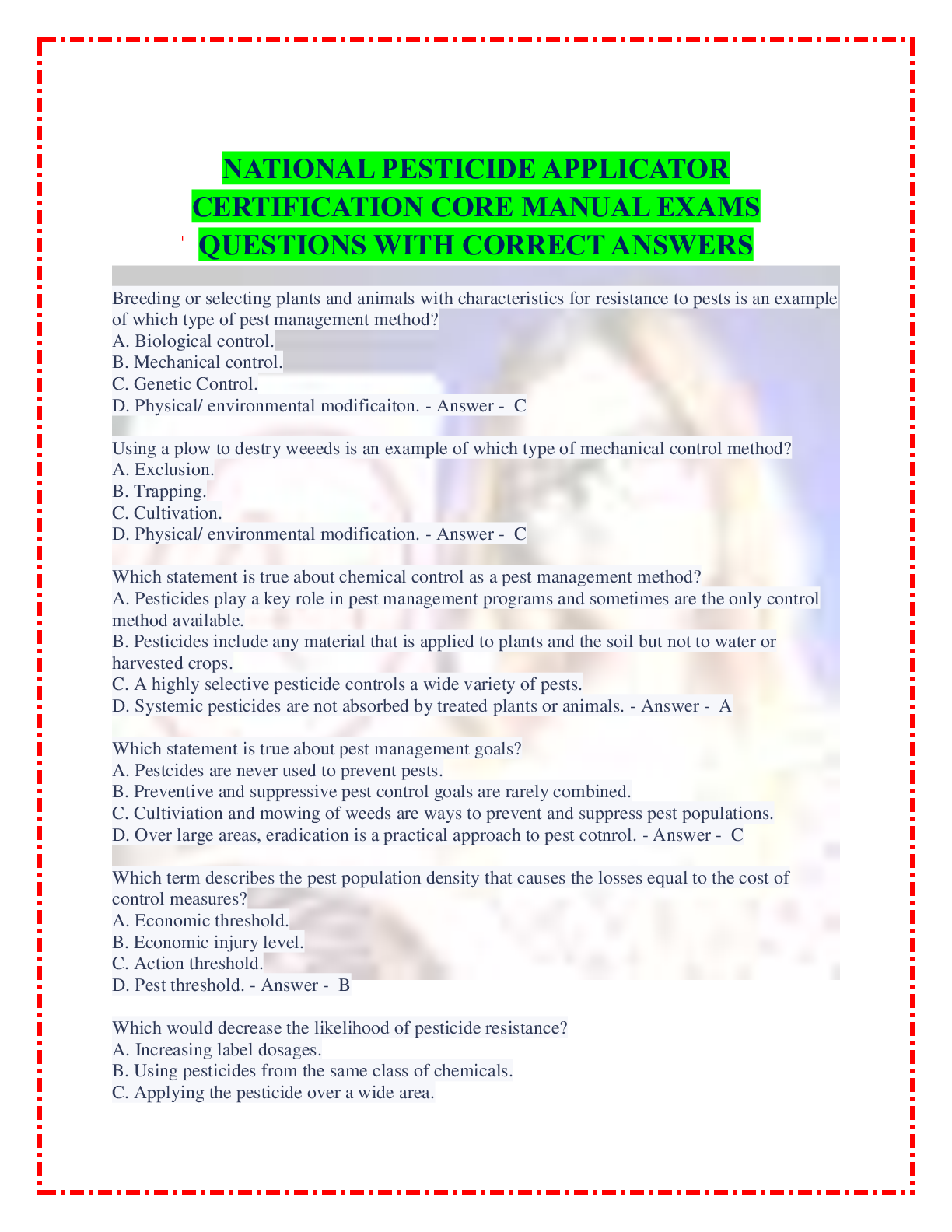

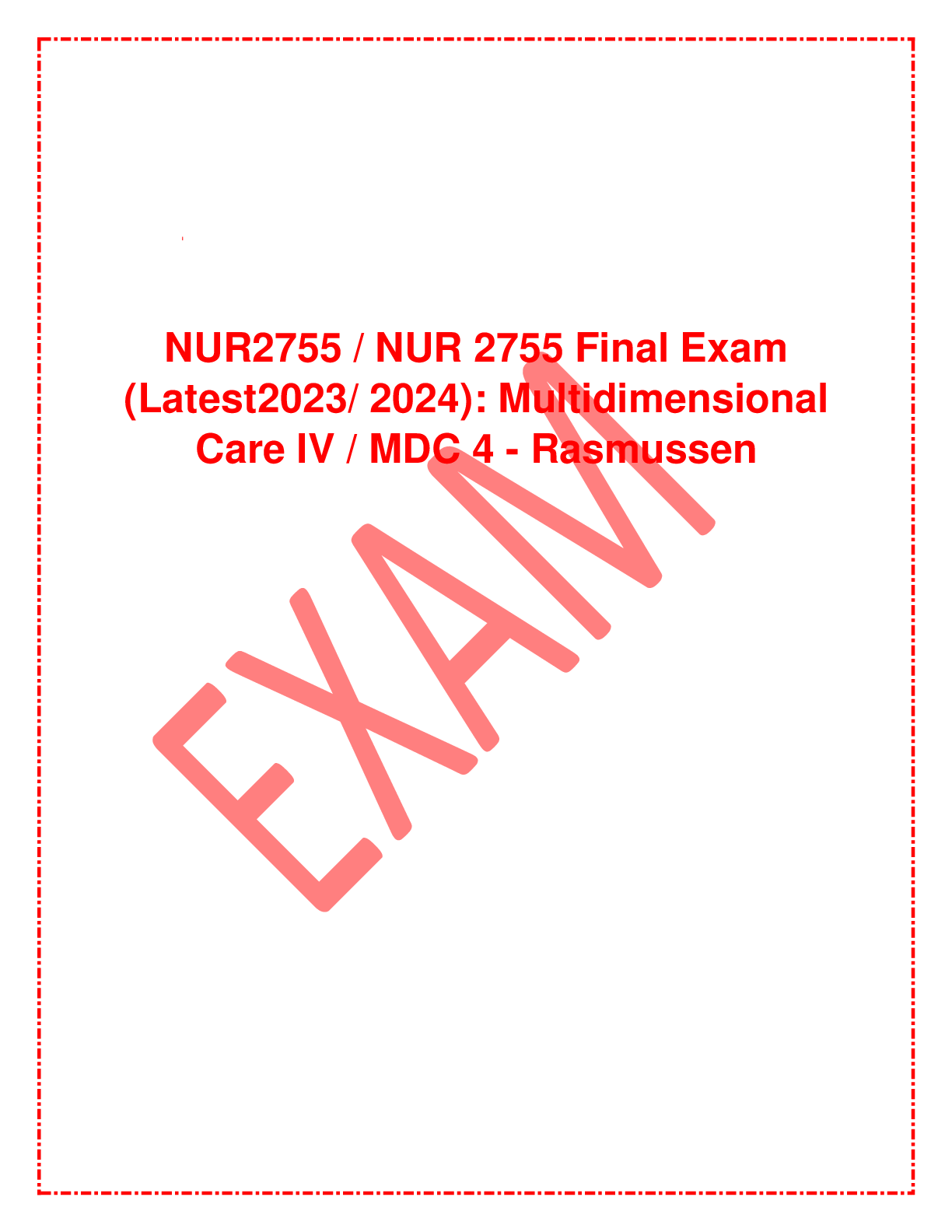
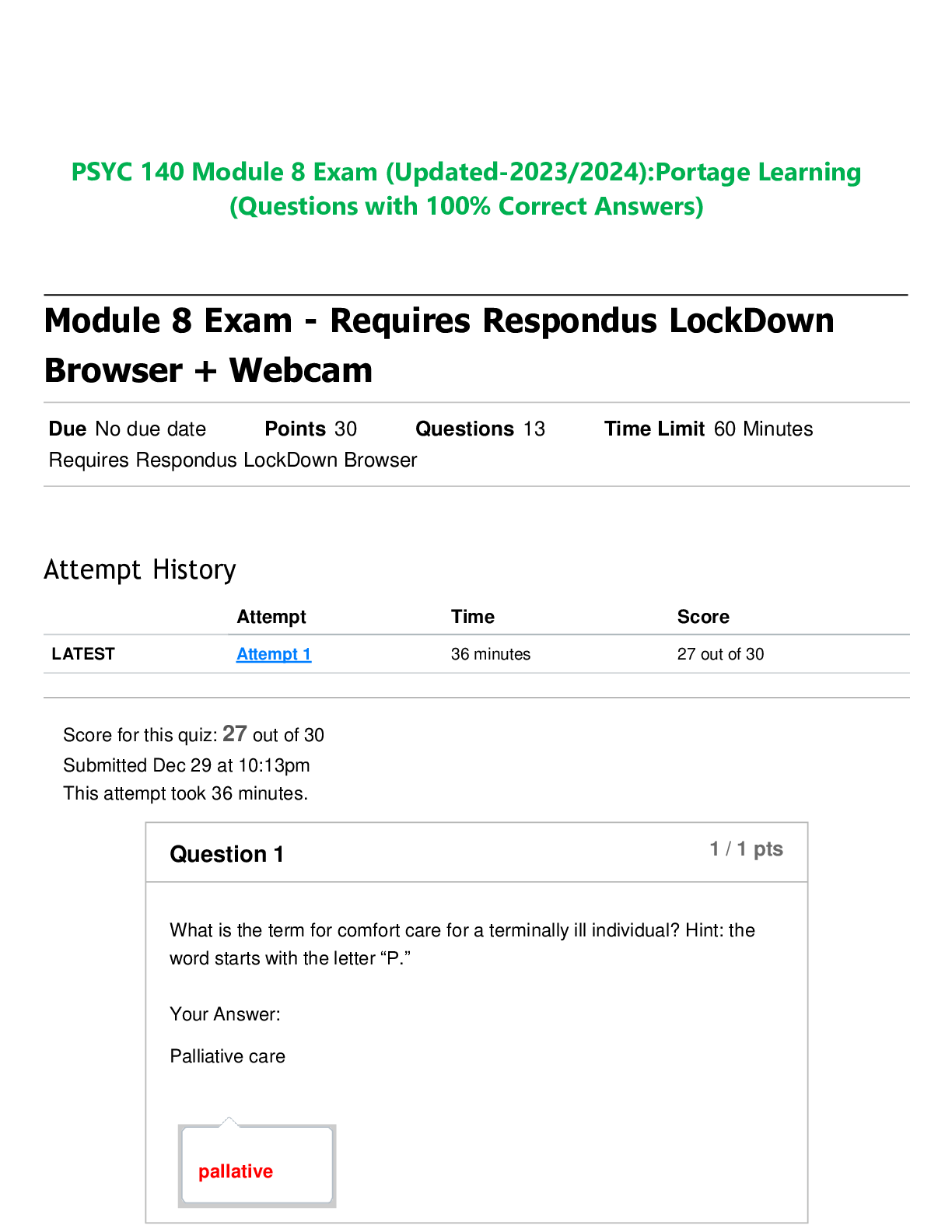
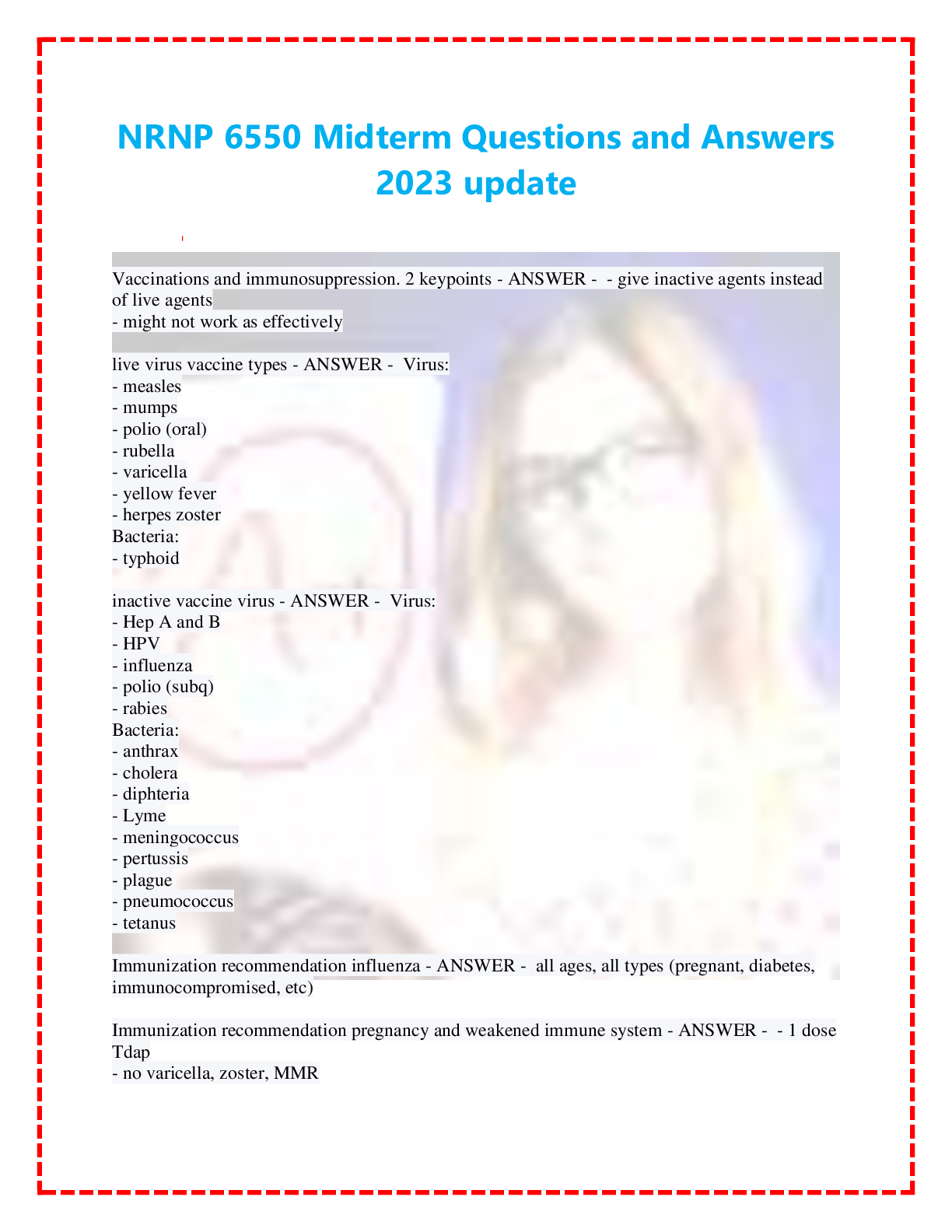

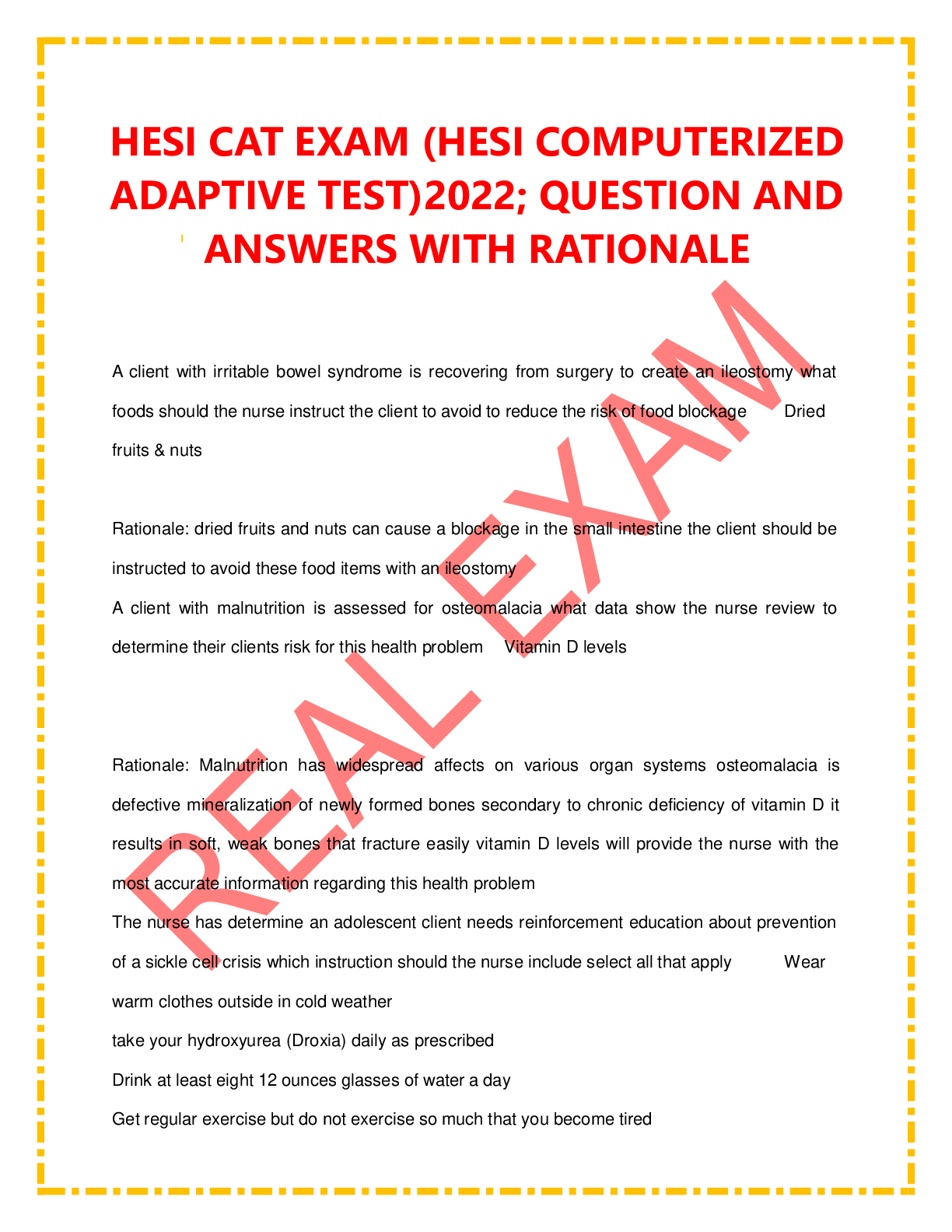
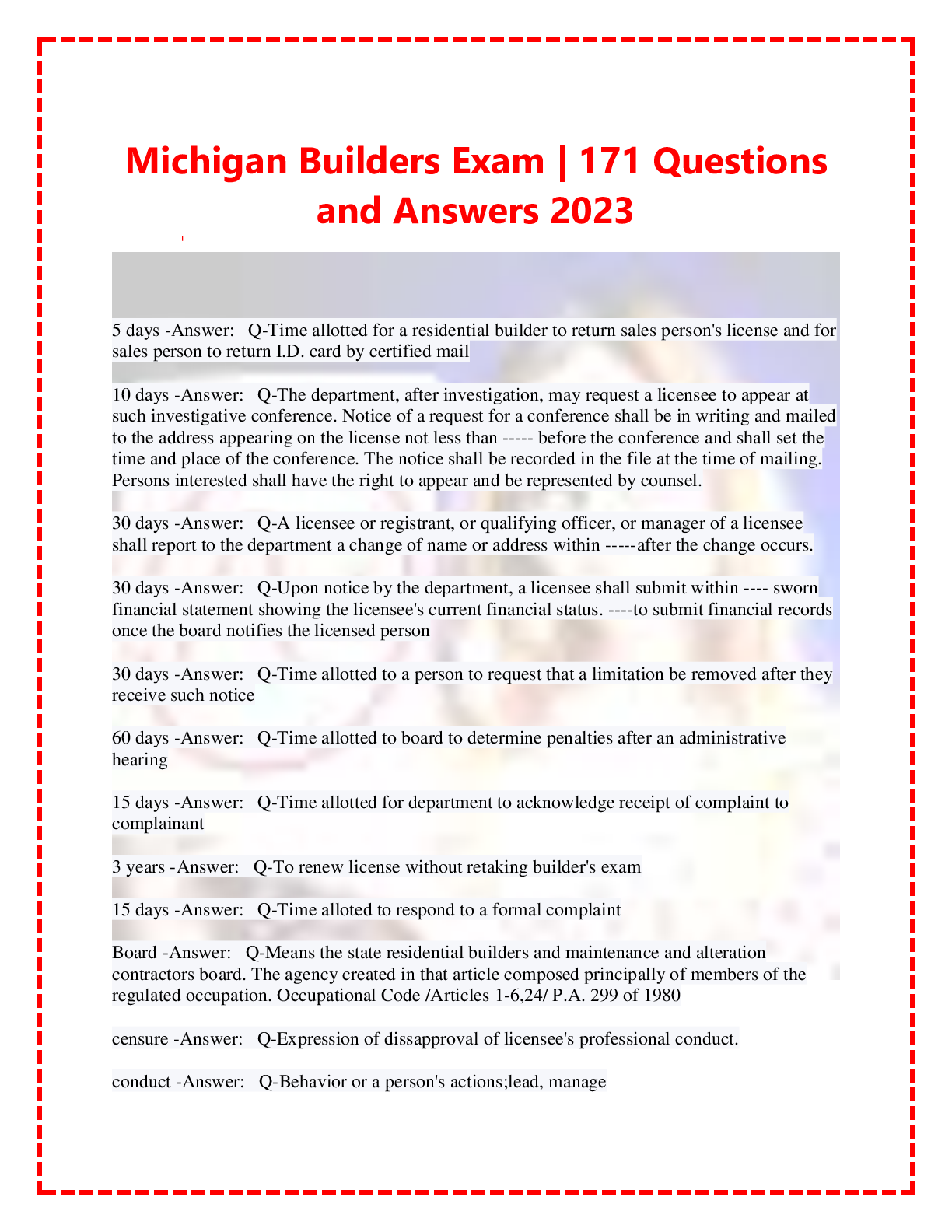
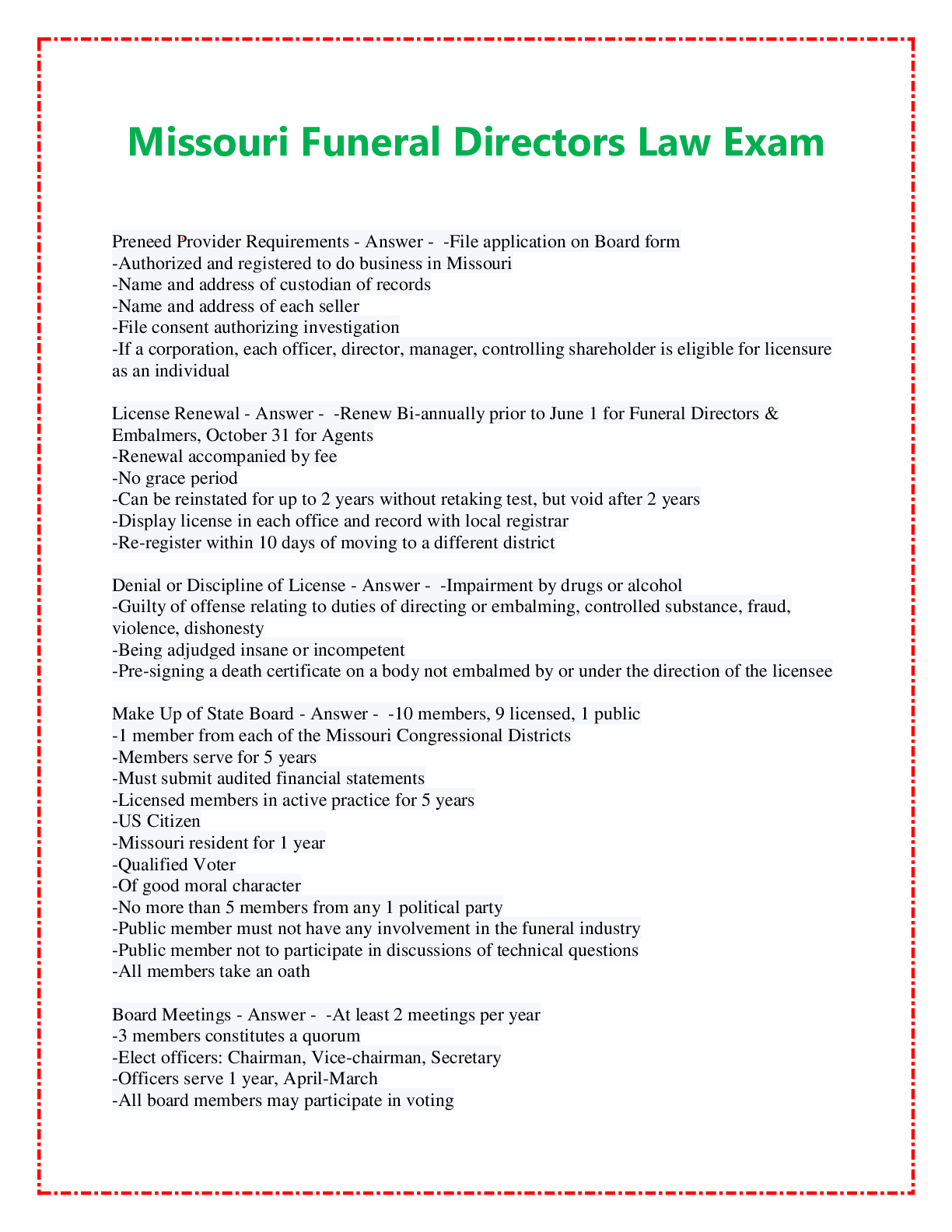
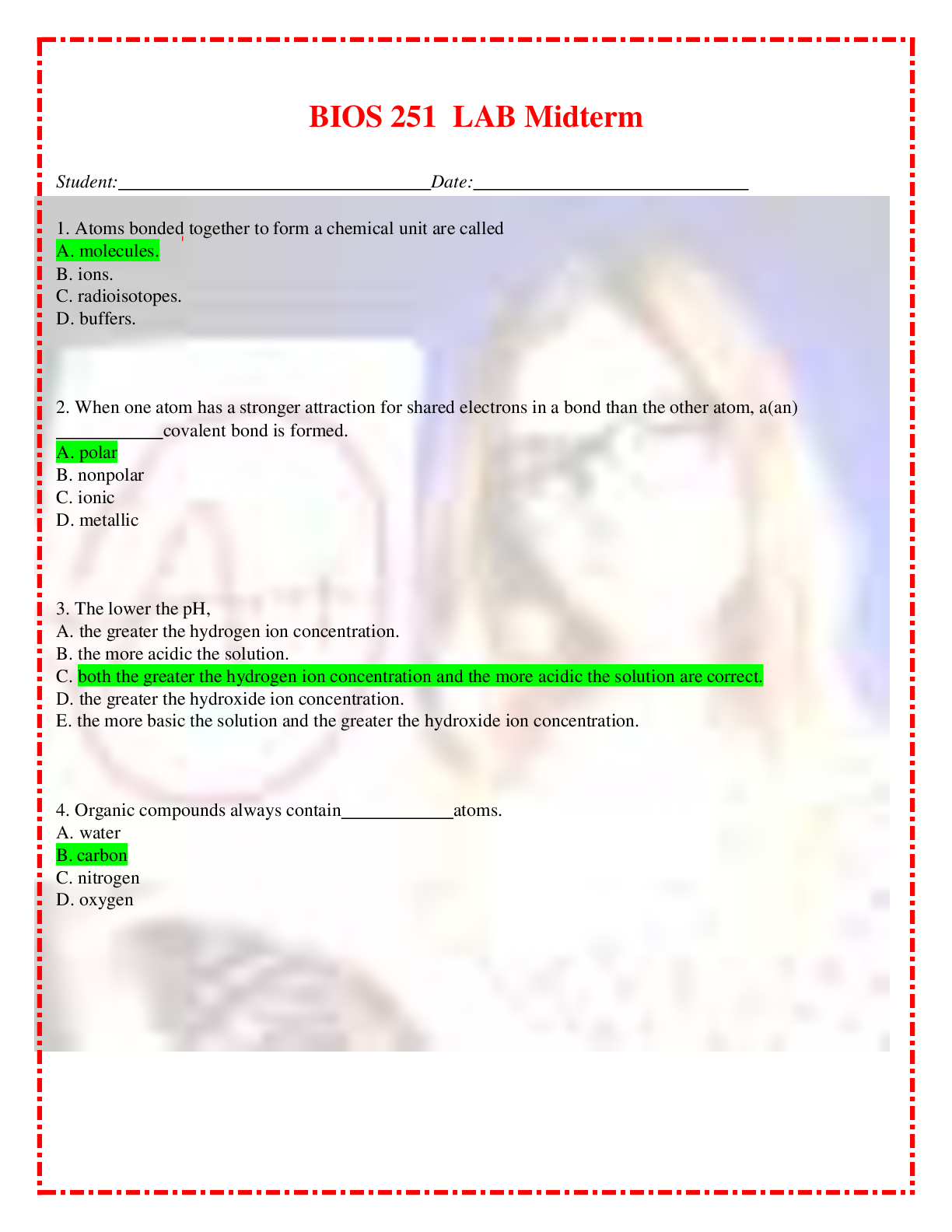
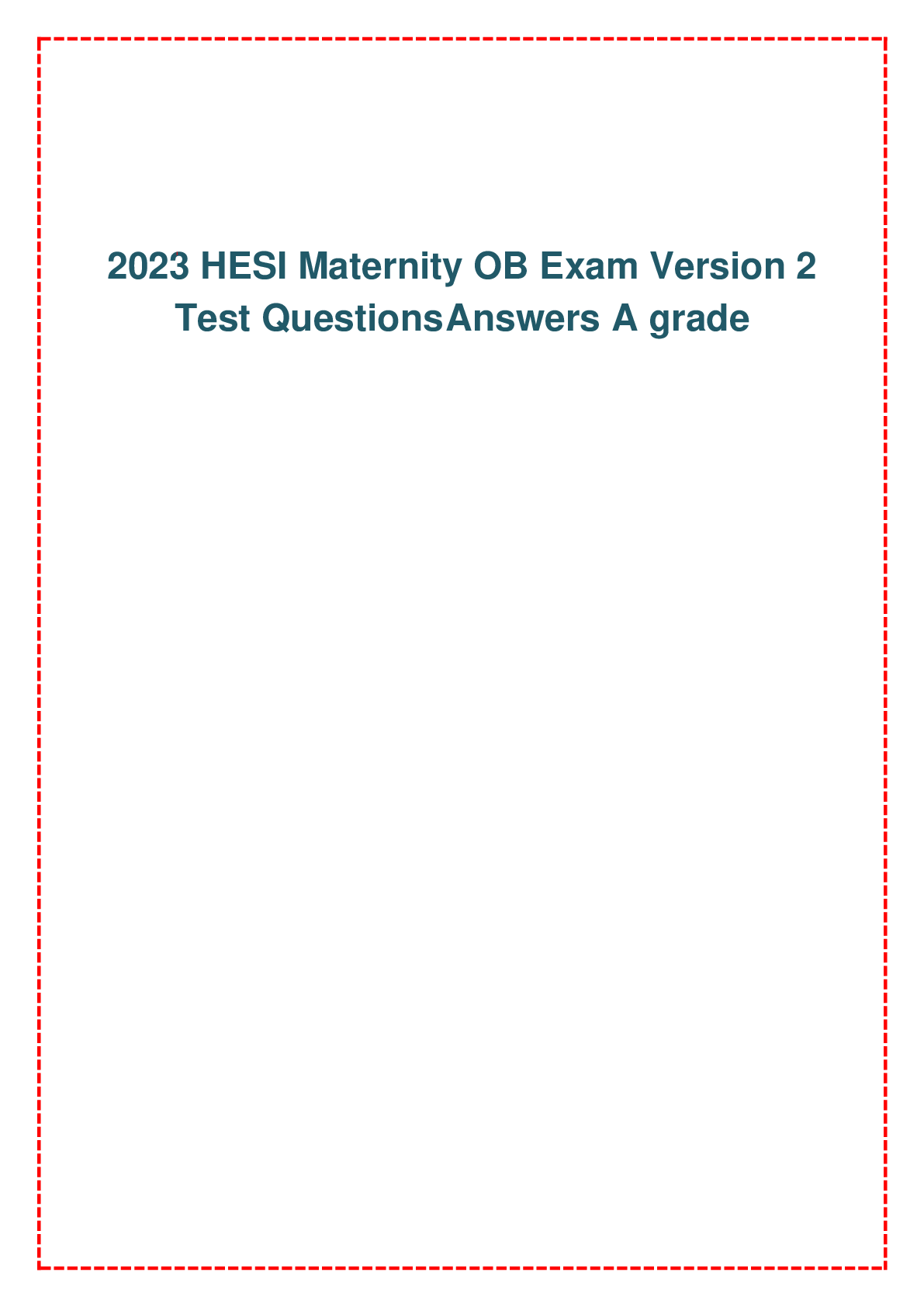
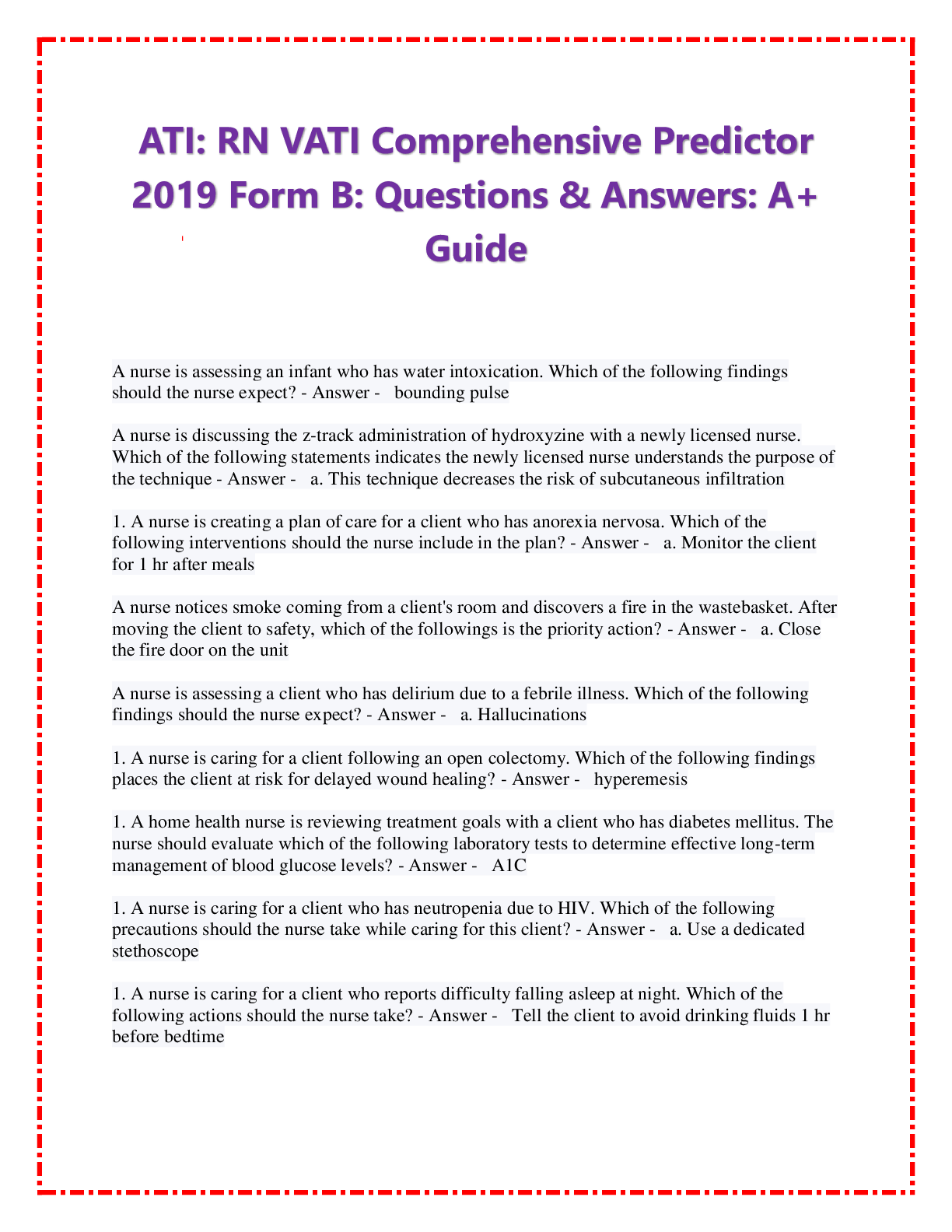
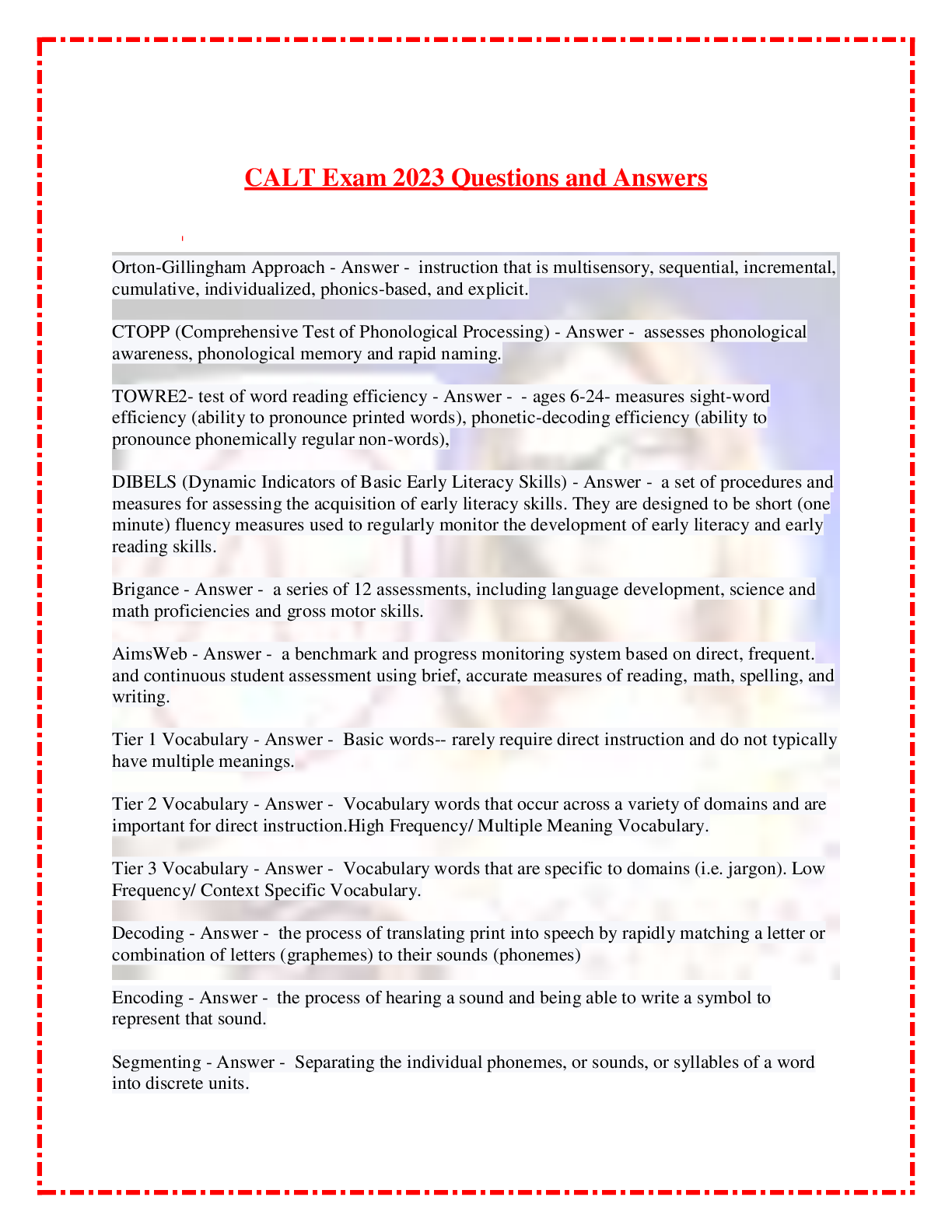
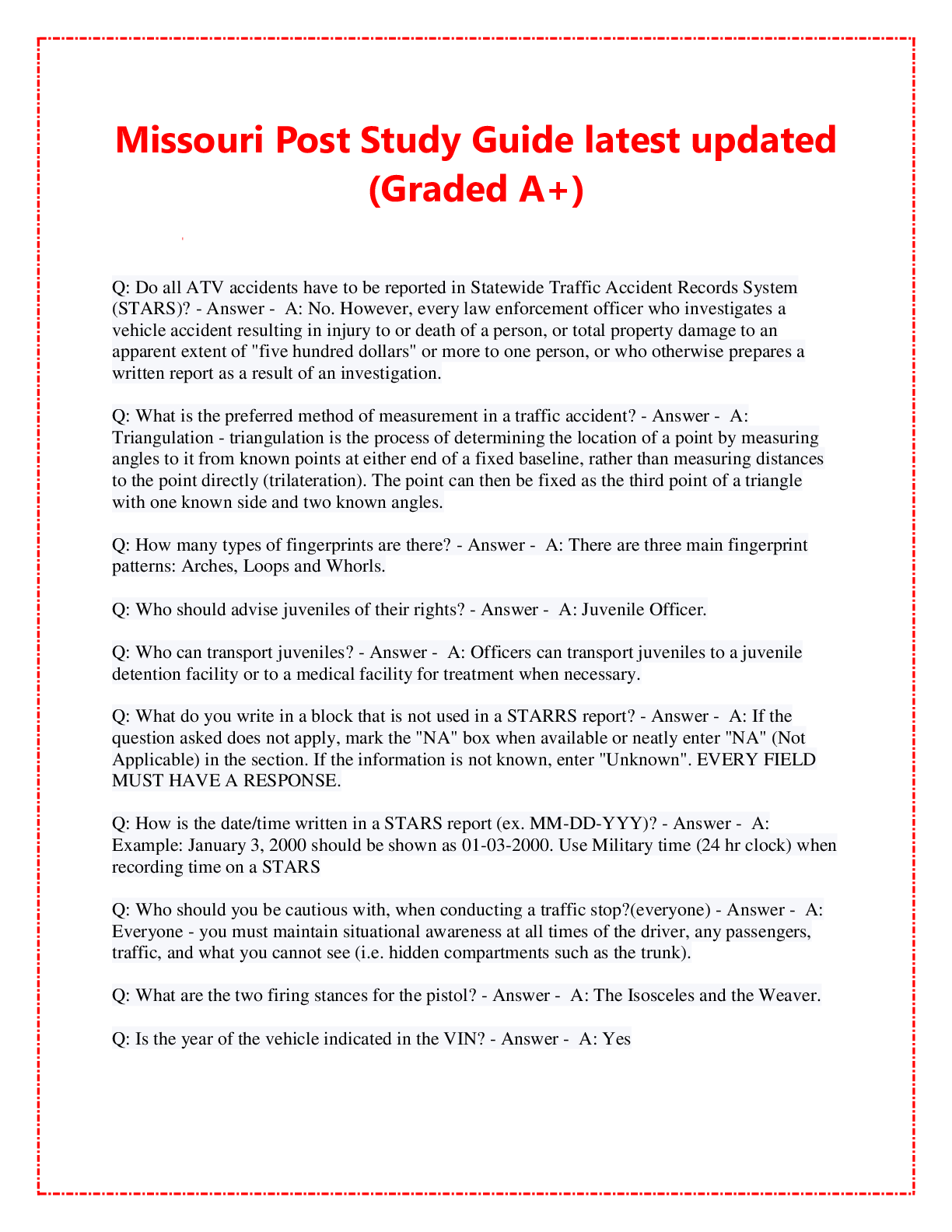
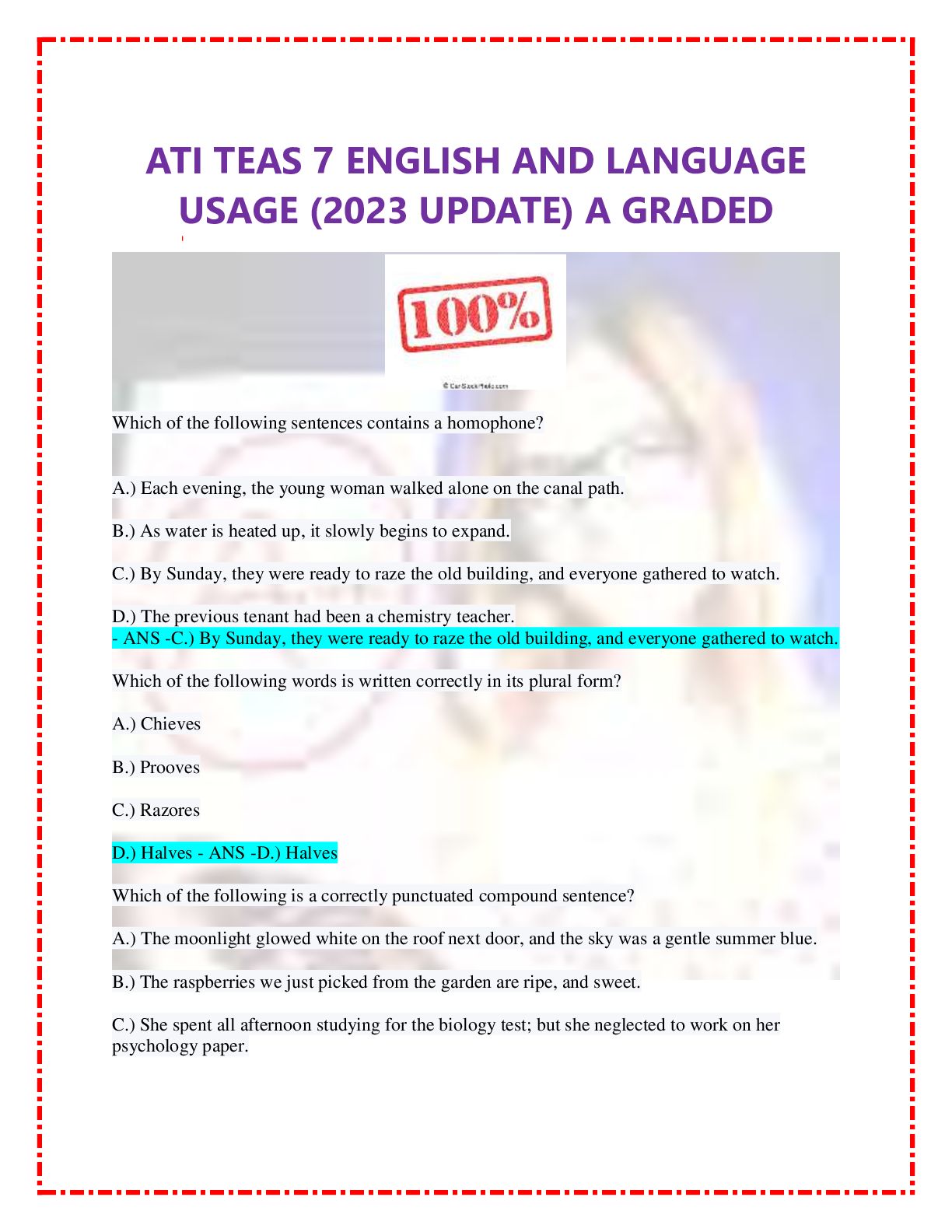
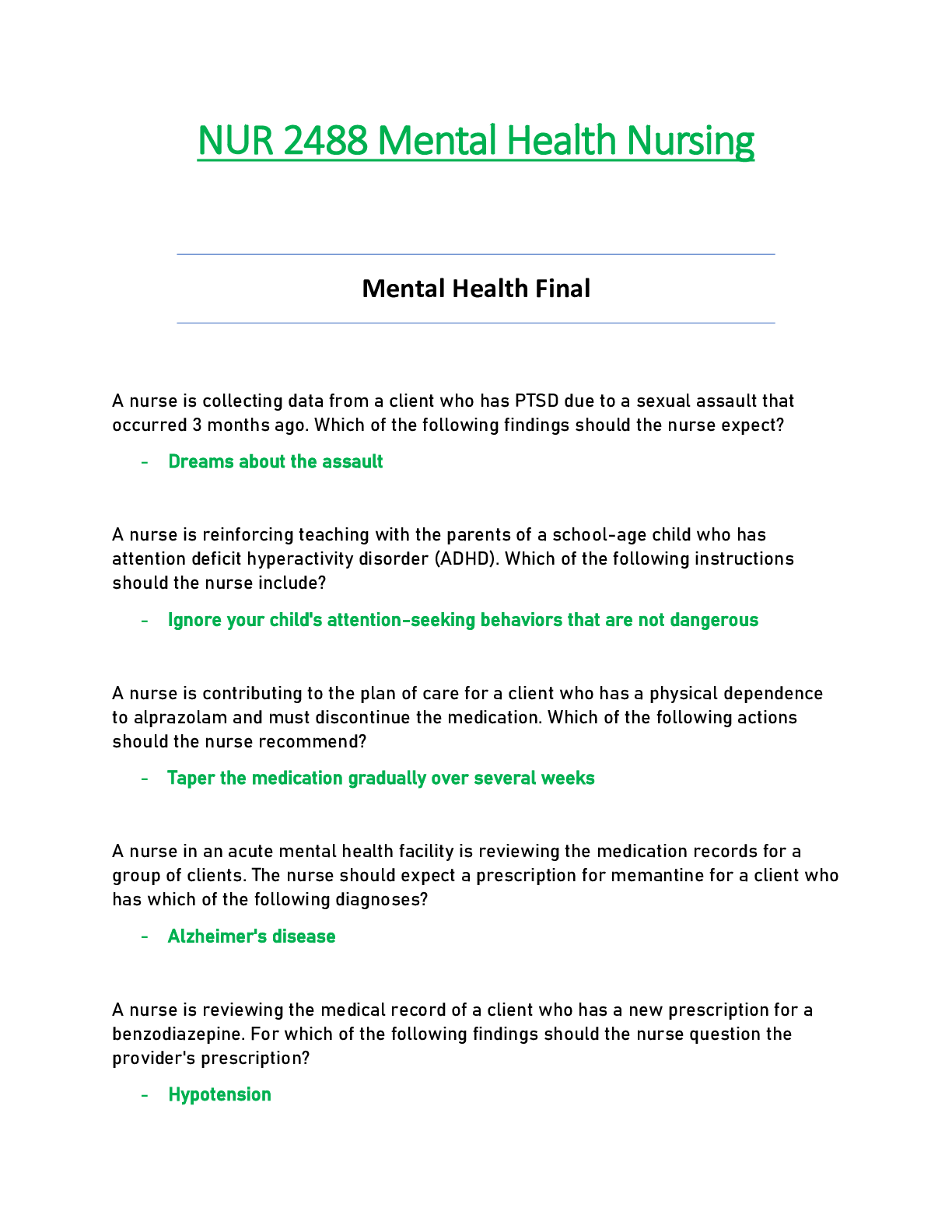
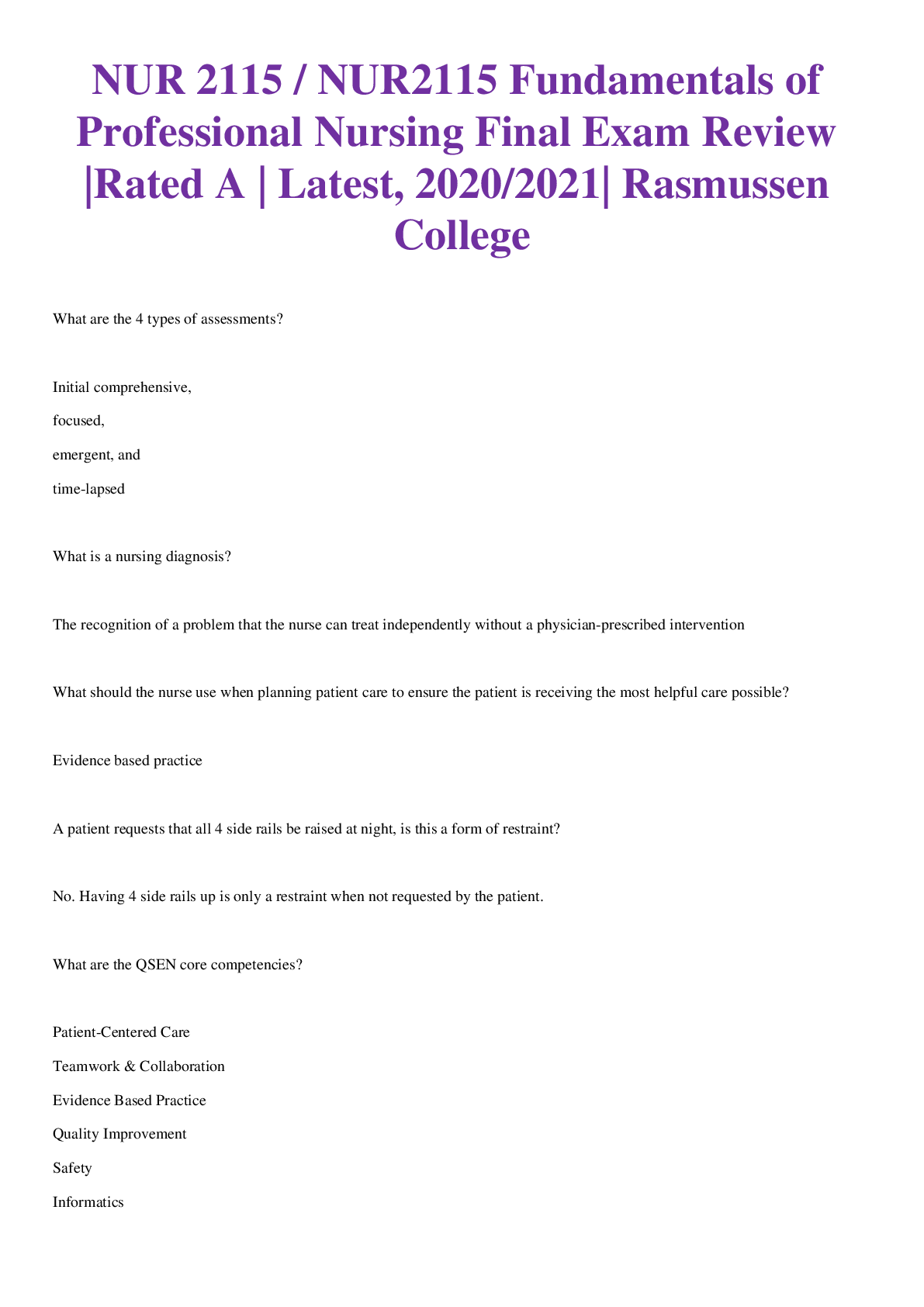
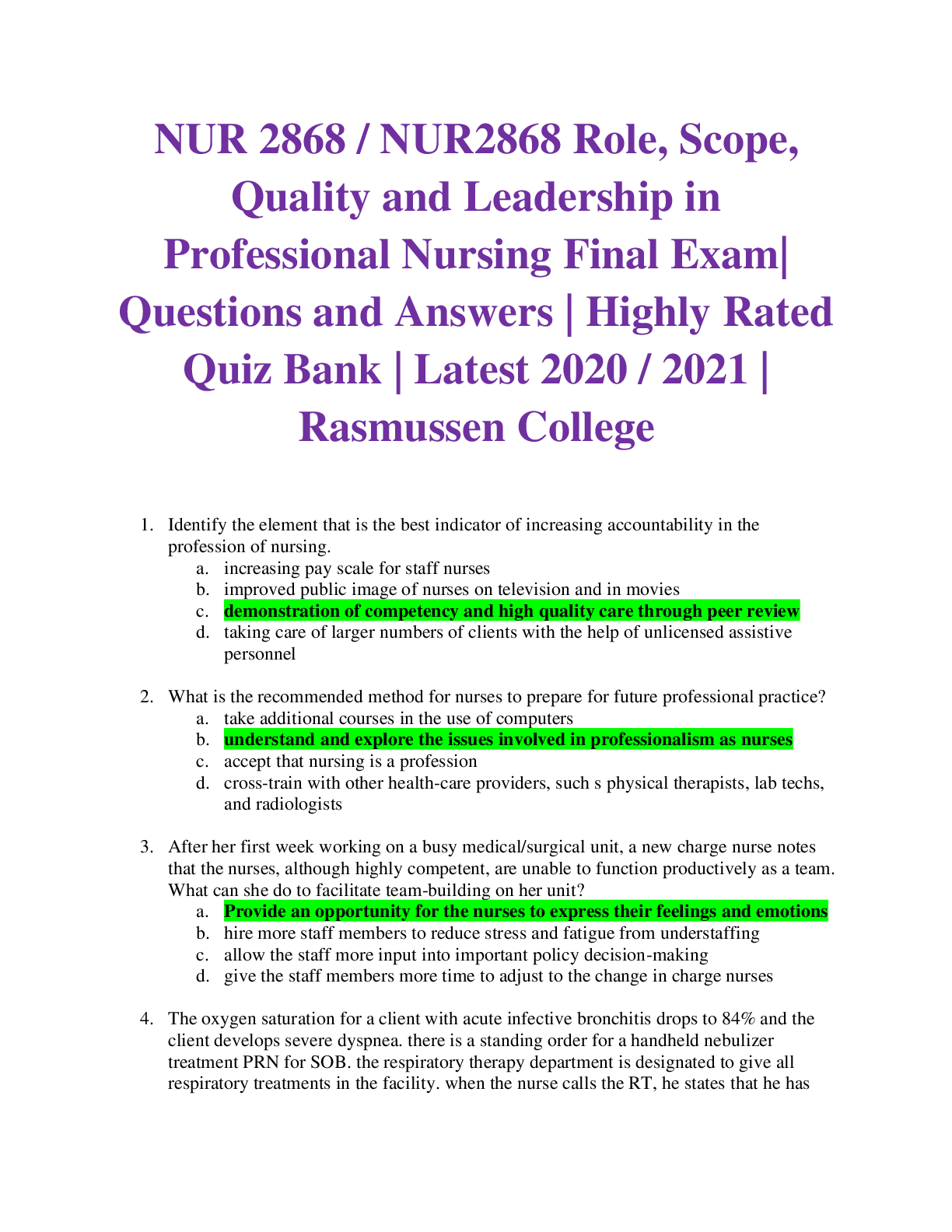

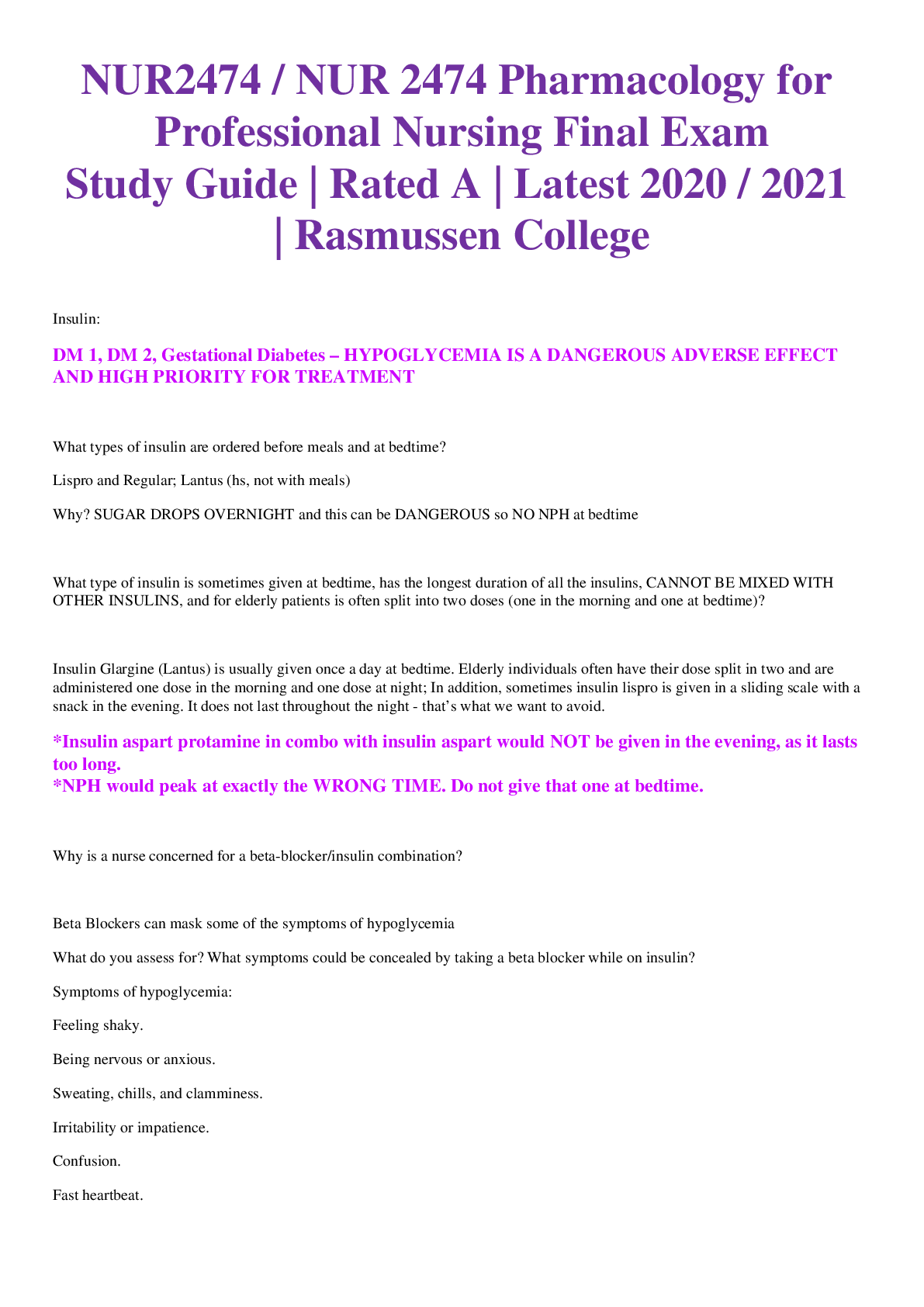

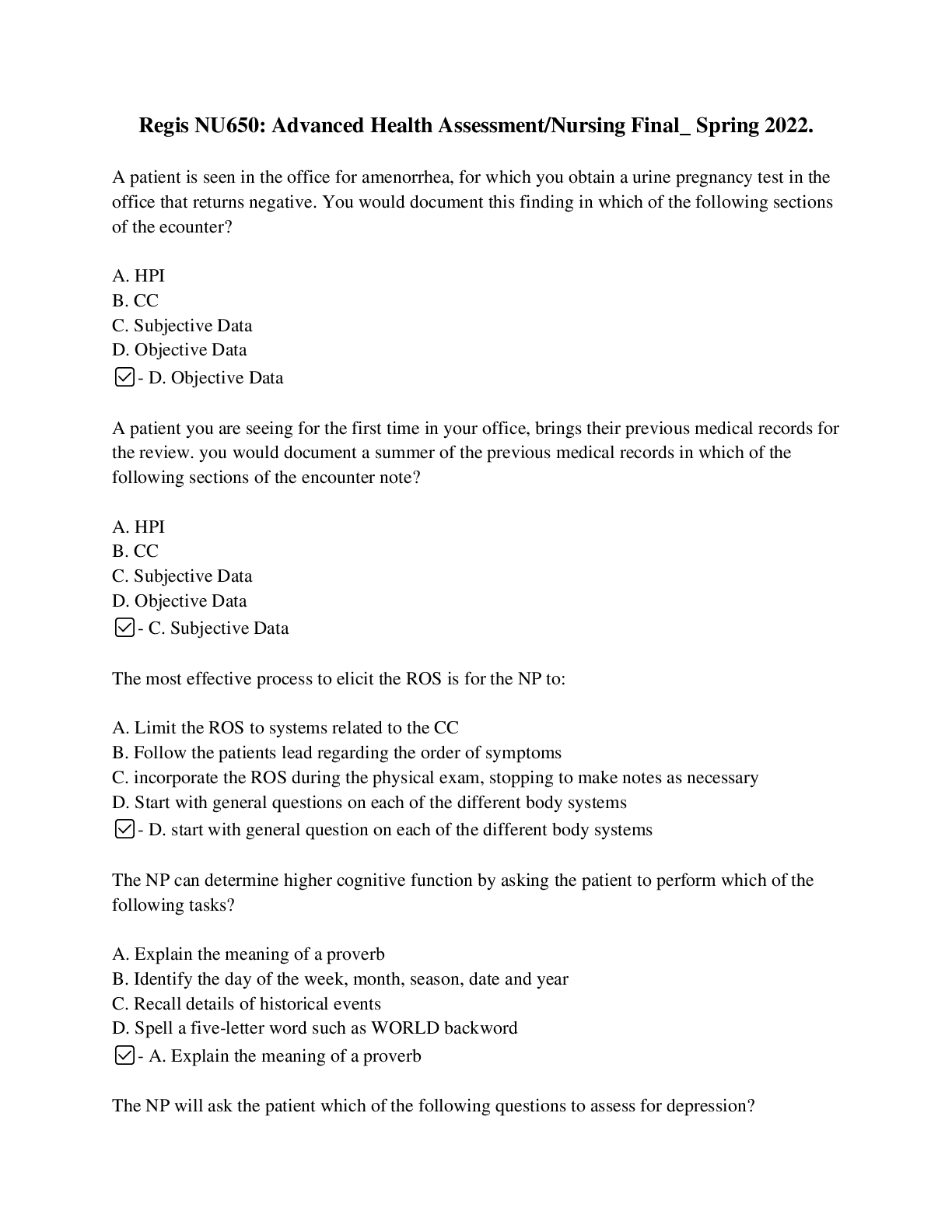
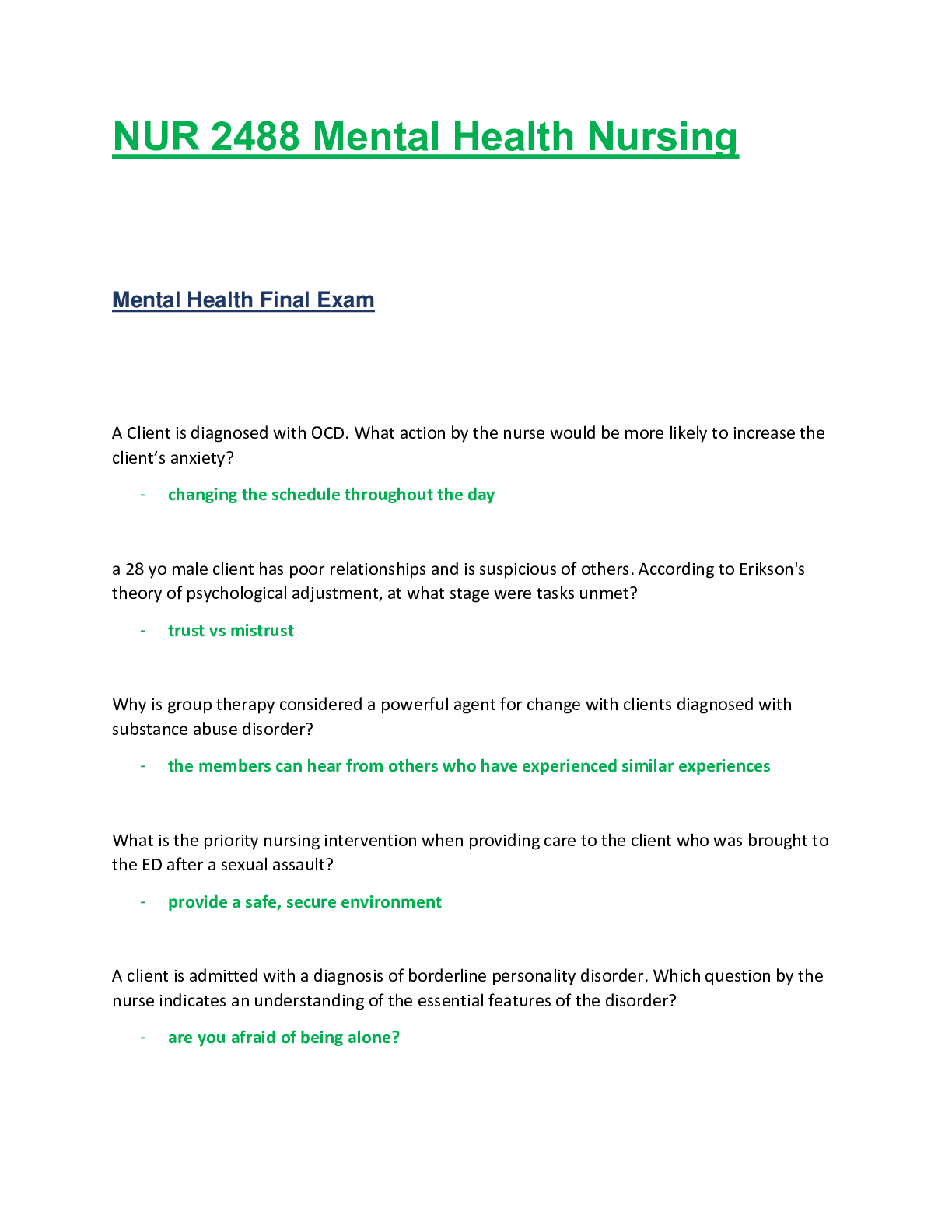
 F21.png)
